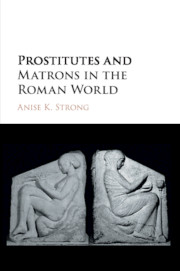Book contents
- Prostitutes and Matrons in the Roman World
- Prostitutes and Matrons in the Roman World
- Copyright page
- Dedication
- Contents
- Illustrations
- Acknowledgements
- Introduction
- 1 Faithful wives and greedy prostitutes
- 2 Good little prostitutes
- 3 Powerful concubines and influential courtesans
- 4 Matrona as meretrix
- 5 Can you know a meretrix when you see one?
- 6 Prostitutes and matrons in the urban landscape
- 7 Pious prostitutes
- 8 The “whore” label in Western culture
- Conclusion
- Book part
- Notes
- Bibliography
- Index
- References
Bibliography
Published online by Cambridge University Press: 05 July 2016
- Prostitutes and Matrons in the Roman World
- Prostitutes and Matrons in the Roman World
- Copyright page
- Dedication
- Contents
- Illustrations
- Acknowledgements
- Introduction
- 1 Faithful wives and greedy prostitutes
- 2 Good little prostitutes
- 3 Powerful concubines and influential courtesans
- 4 Matrona as meretrix
- 5 Can you know a meretrix when you see one?
- 6 Prostitutes and matrons in the urban landscape
- 7 Pious prostitutes
- 8 The “whore” label in Western culture
- Conclusion
- Book part
- Notes
- Bibliography
- Index
- References
- Type
- Chapter
- Information
- Prostitutes and Matrons in the Roman World , pp. 277 - 300Publisher: Cambridge University PressPrint publication year: 2016



